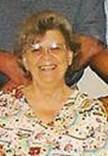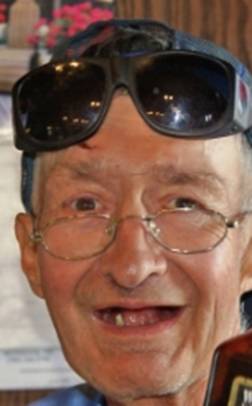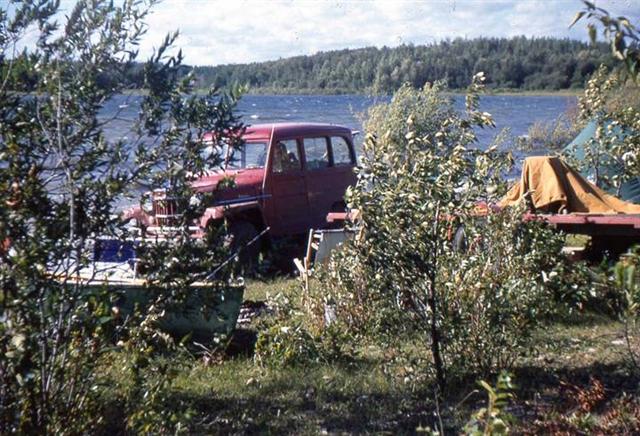Reply from Bill Hosmer (’48): Tucson, AZ
Thank you, Gary for some more heavy memories of the people I knew growing up and in some cases getting old. I appreciate the things you send and with some sadness and some laughter recall the days in Dunseith and surrounding places. Bill Hosmer
Gary’s comment
You are so welcome Bill. I enjoy doing what I’m doing.
Thanks Bill for the nice comments.
Message from Bob Hosmer (’56): Lynnwood, WA
Hi Gary and all, Bob Hosmer here. Emily Bestons got under new management and she has lost contact with the Dunseith group here. Here’s her current email address: She would like to be put on again.
My wife, Carol De Waal-Hosmer, and I will be making a permanent move to Canada January 3, 2018. I’ll be winding up ministry in Stanwood, WA by the end of December and have a 20 year Navy veteran whose taking seminary training online at our seminary in Fergus Falls, MN. He is now a licensed seminarian and a member of our church, so the transition should be quite smooth.
I will be part of a team of Church planters (starters) beginning a church in Red Deer, Alberta, the third largest city in that Province and growing rapidly. I will not be leader of the team, but a member with an assignment to follow through on.
In February, Carol and I will be in Japan for three weeks. One of my grandchildren there is getting married and have asked me to do the service—in Japanese, of course. I will also be celebrating my 80th birthday there with that part of my family. Will also be visiting areas where I used to work and the people I worked with over the years there. So a lot of things going on. Will have to give you a new email address when I get moved to Canada.
Great getting all this Dunseith info and stories. Great job and service to this community that is so spread out now.
Bob Hosmer
Gary’s comment
Thank you so much Bob for this update in your life. I know this is something you will enjoy doing too.
Also congratulations with the wedding of your grandchild too in Japan. That will be special wedding indeed.
==============================================
Blog (653) posted on December 15, 2009
|
Question from Claudette McLeod (80): Dunseith, ND
Gary,
Will you ask the a question for me? I would like to know what ever happened to a lady I think her name was Samia??? Don’t know the correct spelling…. but she used to live with George Albert who lived north of Dunseith.
Claudette McLeod Turtle Mountain Outreach Office (701)244-0199 Condolences from Joan Richard: Dunseith, ND.
I would like to send my condolences to Dick and Brenda Johnson in the loss
of their aunt. My prayers are with you and your families.I would also like to send my condolences to the Roland and Armand Mongeon families in the loss of their brother Adrian Mongeon. My prayers to all of you. Joan Richard Merry Christmas to the Dunseith folks:
From Bonnie Awalt Houle (56): Becker, MN
 Dear Gary and All Your Readers,
The last few years I have begun my day with a cup of tea and “Dunseith Memories” via Gary Stokes’ Blog. I have realized that it took not just our parents to raise us but it took a whole community. Every story depicts an example of neighbor helping neighbor, Parent correcting child whether the child was their child or not, always another set of eyes looking out to see that the children were safe. What an amazing community we were raised in………The accomplishments that each of us speak of were aided by a little town in North Dakota filled with LOVE that spread out to each and everyone. MERRY CHRISTMAS TO EVERYONE THAT WAS LUCKY ENOUGH TO BE TOUCHED BY THIS COMMUNITY.
Bonnie Awalt Houle 1956
Reply from Tom Hagen (51): Messa, AZ & Williston, ND.
Gary, No, Owen Haakenson is from Heimdal , Maddock area and no relation
to the Bottineau people.We love E-mail letters, Love Tom and Dot Donald Egbert (65) – 7/12/07
 Reply to Dick Johnson (68):
From Larry Hackman (66): Bismarck, ND
Dick
In answer to your questions about Don Egbert’s vehicles.
While visiting with Henry last evening I was telling him about the message you sent about the cars, Donald Egbert once owned. He did drive some nice looking automobiles. The big reason he had some nice cars was that his dad did not want him driving around in just any old clunker. That was mostly before he found out that Don was into the alcohol. Damn alcohol!
Adrian loved that kid and would have and did give him almost anything he wanted. I remember the first time I saw Adrian. I was in the second grade. This huge man with a huge voice was raising hell with the third grade teacher for giving his son a low mark on something. I remember I was all eyes and couldn’t believe that this huge man was chewing out this woman teacher. I remember asking someone who this guy was? After finding out, I made a mental note not to cross paths with this guy. Later on in life, when I was much older, I found out that he was actually a nice guy and we did have some good conversations. He was really concerned about his son, Donald.
I remember my brothers and I were skiing across the creek in Evan’s pasture. We had a couple pairs of old skis, a 4 ft. pair and a 6 ft. pair, that had leather straps that you stuck your toe through. Don came along and saw these and tryed them out. The next day he showed up with a bran new pair of skis. When he wanted a bicycle, his dad went and got him the best one he could find. Remember the one that Don rode with the twin saddle bag baskets on the back wheel. It was a nice ride for Dunseith. I have a feeling that if Don could have kept it together, his dad would have given him the world.
Don was a excellent football and basketball player. He started playing with the varsity teams when he was in the seventh grade.
This might of led to his downfall. He started running with the older crowd and picked up some of their bad habits early or at least it enabled him to develope some bad habits early. Yes, Dick I agree with you and feel sorry for the man. I have heard that he has taken the cure several times and he has been unable to change.
Henry recalled that Don’s first car was a 1950 gray Ford. He said Don, him, and Julian Kalk used it one summer to cruise back and forth to Westhope to haul hay bales for a farmer. He remembers that Don lost his keys for it one day and they tried to hot wire the car, and burned the points. The farmer who was set up to tow a swather over to a farm he had east of Bottineau. He threw a chain around the bumper of Don’s car and tied it on to the back of the swather and towed the swather and the car with them in it to his farm. He then gave them a ride to Lamourix’s Garage in Dunseith where they purchased points and and a ignition system. They repaired the car and got it running in less the a 1/2 hour. In them days the auto companys idea was to make it easy to repair an automobile. Don always did have bad luck with his cars. Henry don’t recall what happened to the Ford. Henry thought the next car Don drove was his dad’s 1952 brown and white chevy. I remember Adrian driving that car, but, don’t remember Donald driving it.
You are right! The next car Donald had, was a honey of a car. It was a 1956, peachs (orange)and cream, two tone colored Mercury. It was sweet! I would love to have a car like that even now.
It was 1961 Halloween night. Don was driving his Mercury with three other people in the car with him including Henry. They had pulled some shenanigans some where South of town. They thought they were being followed. Don shut off his lights. They were cruising down this section line road in the dark. Someone shouted theres a car on the road. Don switched on his head lights, and bang. Two nice cars were damaged that night. Who would of thought that some fellow would be parked in the middle of the road, with his girl friend, and with the lights off. I imagine they were a little surprised too.
The next car Don had was a beautiful 1957 Chevy. It was baby blue and white in color. Another real sweet ride! He wrecked it, by hitting the ditch on the road to the cemetary.
His next car was after he quit high school and went to work on the missile bases. He came back to town with a 1963 white Chevrolet. Another real nice ride. I remember coming to work one morning at Robert’s Service and their it was setting with one back wheel wore down to the diameter of the brake drum. Apparently he had a flat and didn’t stop to change wheels. Someone said he drove it from Bottineau with the flat.
The next and the last car that I and Henry remember Don driveing was a 1960 Mercury, It was baby blue and white in color. It was a huge car. In fact I bought it from Don and later sold it to one of the Pigeon brothers.
By this time Don had lost his license so many times, he was never getting it back. Not in this life-time anyway.
Reply from Bill Grimme (65): Birmingham, AL
Gary,
Here is the story of the plane crash that Spencer Teal died in.
Bill
———————————
Reply from Dick Johnson (68): Dunseith, ND Gary and Friends, In Paula’s picture of the fishing camp with Bob Hosmer’s Jeep, there Dick
Happy Holidays! From Pete (65) & Verena Gilles: Dunseith, ND |

